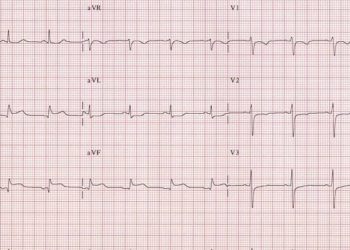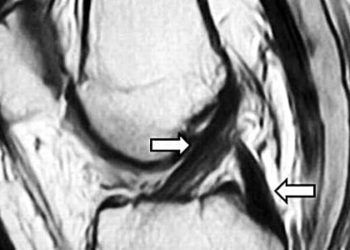Mosaic osteochondral autologous transplantation shows benefits over microfracture for the treatment of osteochondral defects in the knee joint of athletes
Image: CC
Key study points:
1. Patients treated with osteochondral autologous transplantation (OAT) had better clinical results as assessed with the ICRS score at the 10-year follow-up than those treated with microfracture (MF).
2. Rates of reoperation were higher in MF group than in the OAT group.
3. Decrease in sports activity was significantly higher in the MF group than in the OAT group.
Primer: Articular cartilage defects (ACD) and osteochondral defects (OCD) of the knee joint are common among high-performing athletes. Treatment for these defects have been proven effective, and include two arthroscopic techniques: osteochondral autologous transplantation (OAT), and microfracture (MF). OAT involves harvesting cartilage from a joint in the patient’s body and transplanting it at the site of injury. Microfracture involves creating small fractures in the underlying bone at the site of injury to promote new cartilage growth. The effectiveness of these techniques are both supported by clinical data. However, OAT is currently the only single-stage surgical technique that provides hyaline articular cartilage repair with fibrocartilage between the plugs and on the rim. This paper presents long-term clinical results comparing the two techniques in an athletic population. Outcomes were evaluated post-operatively by the the International Cartilage Repair Society (ICRS) cartilage injury grading system to classify articular cartilage defects, and the Tegner score for evaluating sporting activity. The Kellgren-Lawrence was also score used to grade osteoarthritic changes of the knee joints, and the magnetic resonance observation of cartilage repair tissue sore system (MOCART) score was used to grade articular cartilage repair quality.
Background reading:
1. Up-to-date: Osteochondritis dessicans
2. Treatment of unstable osteochondritis dessicans using mosaicplasty.
4. Outcomes of Microfracture for Traumatic Chondral Defects of the Knee: Average 11-Year Follow-up.
This [randomized] study: compared outcomes of OAT and MF for treatment of ACD and OCD in knee joints of athletes 3 to 10 years. At 10 years, the OAT group showed statistically significant improvement in the ICRS in the OAT group compared with the MF group (P < .005). The ICRS evaluation showed significantly improved results in the OAT group at 3 and 10 years follow-up after the operation (P < .001 and P < .001 respectively). In both OAT and MF groups, ACD patients had significantly better ICRS clinical results compared with OCD patients at the 3 and 10 year follow-up (P < .001).
There were statistically significant improvements in Tegner scores with both procedures. The ICRS and Tegner scores of younger athletes (<25 years) remained significantly higher after 10 years compared with older patients (P < .05). 75% in the OAT group and 37% in the MF group returned to the same level of physical activity.
In sum: The authors show long term findings that suggest OAT may provide athletes with better outcomes in terms of clinical improvement, as well as return to physical activity than MF.
Some limitations of this study include the finding that athletic activity levels with both techniques remained better than before surgery, as well as the influence of age in measuring return to sports activity. This is likely due to the fact that the many of the study patients were high level athletes and younger patients, and, as such, the improvement results may not be as dramatic in lower activity or older patients.
Click to read the study in AJSM
By [JG] and [AH]
© 2012 2minutemedicine.com. All rights reserved. No works may be reproduced without written consent from 2minutemedicine.com. Disclaimer: We present factual information directly from peer reviewed medical journals. No post should be construed as medical advice and is not intended as such by the authors or by 2minutemedicine.com. PLEASE SEE A HEALTHCARE PROVIDER IN YOUR AREA IF YOU SEEK MEDICAL ADVICE OF ANY SORT.






